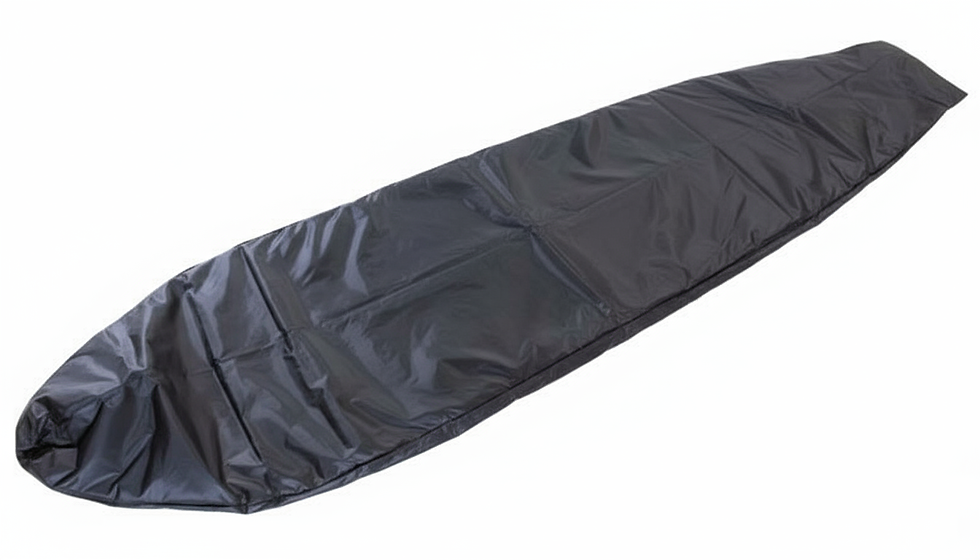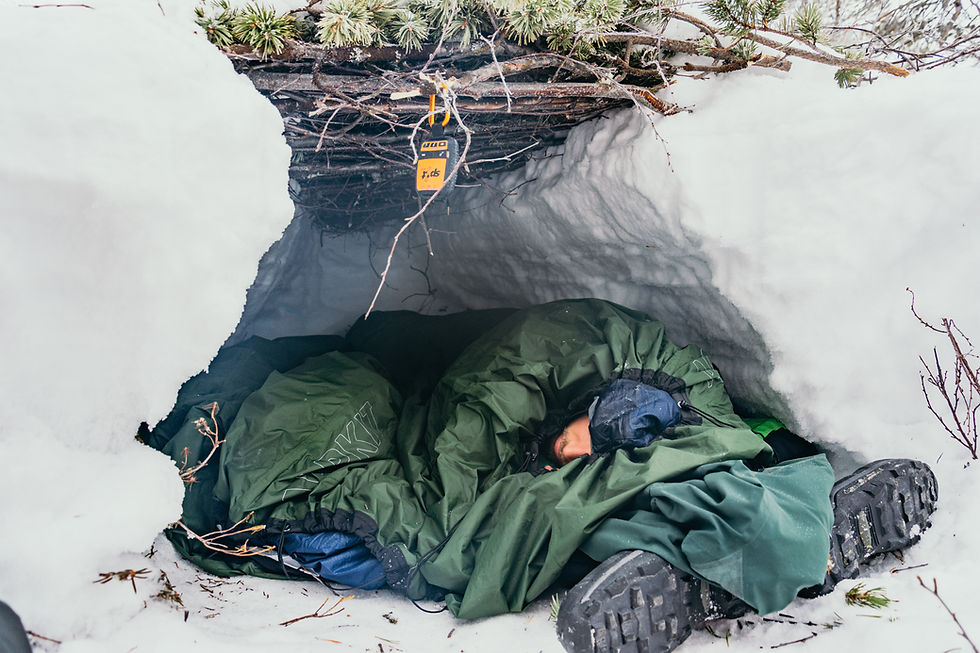Wet sleeping bag? How to prevent that.
- Miel Bonduelle
- Oct 9
- 3 min read
Imagine this: you're about to spend a night in the wilderness. The campfire is smoldering, the stars are glittering... and then the unthinkable happens: your sleeping bag is soaked. Rain that secretly crept through the tent, a soaking-wet groundsheet, or just the sweat from a day of effort it can just happen. Panic? Not necessary! With a little bit of knowledge and a smart approach, you can survive even the wettest nights without shivering from the cold.

Why you really don't want to sleep in a wet sleeping bag.
For every adventurer, a wet sleeping bag is a true nightmare. A little moisture here and there seems harmless, but as soon as the filling becomes soaked, you lose your insulation and, with it, your warmth. The result? Your body cools down faster than you'd like, and your energy reserves melt away even before the new day begins. And believe me: a damp sleeping bag dries slower on the go than a campfire you're trying to light without wood.
How moisture sneaks into your sleeping bag.
Water is the silent enemy in the wilderness. It sneaks in where you don't want it: rain leaking in through a gap in your tent, condensation dripping from the fabric at night, ground moisture slowly pulling its way up, your own sweat after a day of exertion, or the wet clothes and gear you carelessly lay next to your sleeping bag. No matter how you look at it: nature and your body will always find a way to get your sleeping bag damp.
Keeping your sleeping bag dry and adventure-ready.
Moisture doesn't have to ruin your night's sleep, provided you use a few clever survival tricks. For example, put your sleeping bag in a sturdy waterproof compression sack: a reliable barrier against downpours and river crossings. Lay a groundsheet under your tent to keep out rising moisture and unexpected puddles. A sleeping bag liner can also work wonders: it keeps your sleeping bag extra dry and warm, and is easy to wash if the adventure turns wet.
Got wet anyway? Here's how to salvage the night.
If you're unlucky and your sleeping bag is wet? Don't panic, there's always a solution. Immediately look for sun or wind to spread it out and dry it nature will do a large part of the work for you. If the sleeping bag is only slightly damp, you can safely sleep in it; your warm body will help it dry out bit by bit. And do you have a bivy bag or survival blanket with you? Use those to get through the night comfortably and warmly.
Vapor barrier liner: your secret weapon against moisture.
Vraag beantwoord
Opnieuw proberen zonder apps
Did you know there is such a thing as a Vapor Barrier Liner? This is a waterproof inner lining that you wear inside your sleeping bag, which prevents your own sweat from penetrating the insulation.
Especially during ice-cold trips or in wet climates, this is a true game-changer. The liner keeps your sleeping bag as dry as a desert, ensuring maximum warmth without compromise.
A Vapor Barrier Liner (VBL) comes in handy in situations where moisture can sabotage your warmth. Think of ice-cold expeditions and winter treks where every degree counts, or when you sweat heavily and your sleeping bag constantly gets damp as a result. It's a particularly smart choice for down sleeping bags, as down tolerates moisture even less well than synthetic filling.

Bonus tip for adventurers.
Wear your liner close to your skin, combine it with a waterproof compression sack, and don't forget to properly air out and clean your gear after every trip. That way, everything stays in top condition and ready for the next adventure.
Getting wet is part of nature, but cold and discomfort certainly aren't. With the right tips and the right gear, you'll stay warm, dry, and full of energy, ready to start every new day of adventure.



Comments